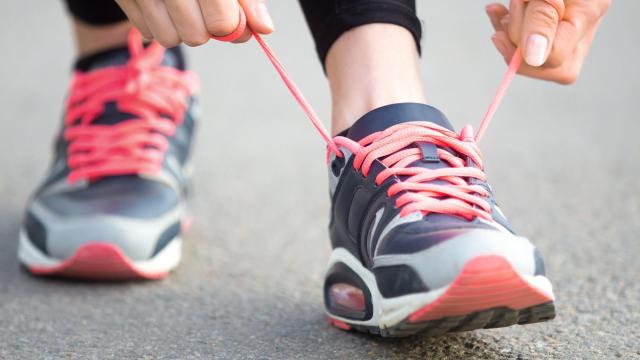We’ve previously written about why people shouldn’t overthink their running shoes. At the same time, knowing your body and finding the right shoe fit could make the difference between lacing up for a run and staying home.
Of all the overhyped features that make shopping for running shoes an overwhelming experience, the heel-toe drop is a pretty useful metric. It might not make or break your mile times, but understanding this term can help you find the most comfortable ride possible for your walks and runs. Here’s what to know about finding the right heel-toe drop for you.
What is heel-toe drop?
Heel-toe drop (sometimes shortened to just “drop”) quantifies the difference between the amount of cushioning beneath your heels and the amount of cushioning beneath your toes. It’s best visualized as how big the heel on a shoe is. A high heel-toe drop means a steeper slope and more heel cushioning. Barefoot runners would therefore preach the power of a zero heel-toe drop, since that would essentially be your naked foot.
Here are some specific examples of heel-toe drop from Running Warehouse; the stat can also be found across most other running shoe resources:
- A high heel-toe drop (over 7 mm) is best for runners who strike heel first, have issues with their Achilles tendon, or who often wear shoes with an elevated heel.
- A low heel-toe drop (from 0 to 6 mm) is best for runners who land on the middle or front of the foot.
If it’s not listed, you can calculate the heel-toe drop yourself by looking at the stack height numbers in the shoe’s description and subtracting the forefoot number from the heel number.
Does heel-toe drop matter?
Neither high nor low heel-toe drop will make one shoe inherently “better” than another. If any runner tries to tell you that one style of drop has game-changing benefits, be sceptical.
When drop does matter: If you’re transitioning shoes, you’ll probably notice a difference if you go from a high to low heel-toe drop (or vice versa). The switch to a lower drop especially might lead to soreness in your calf or Achilles tendon. This could cause discomfort, so it’s a helpful number to keep in mind as you gradually transition between different shoe models.
At the end of the day, personal preference takes precedence over specific heel-toe drop numbers. Understanding heel-toe drop can help experienced runners who like to cater to their foot strike, but for most of us, our earlier advice still applies: Don’t overthink it.

Leave a Reply
You must be logged in to post a comment.